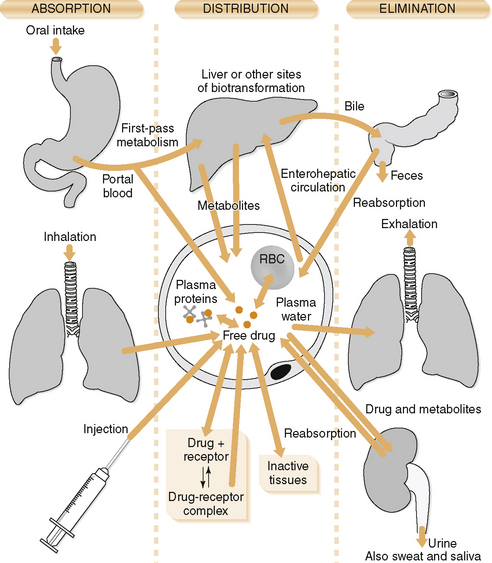An indicator that an individual is experiencing acute stress is:
Decreased respirations
Tachycardia
Hair loss
Pupil constriction
The Correct Answer is B
Choice A: Decreased Respirations
Decreased respirations, or a slower breathing rate, are not typically associated with acute stress. In fact, acute stress often leads to an increase in respiratory rate as part of the body’s “fight or flight” response. This response is mediated by the autonomic nervous system, which prepares the body to respond to a perceived threat by increasing heart rate, respiratory rate, and blood pressure.
Choice B: Tachycardia
Tachycardia, or an increased heart rate, is a common indicator of acute stress. When an individual experiences acute stress, the body releases stress hormones such as adrenaline and cortisol. These hormones stimulate the heart to beat faster, providing more oxygen and nutrients to the muscles and brain to prepare for a rapid response to the stressor. Tachycardia is a hallmark of the acute stress response and can be easily measured by checking the pulse.
Choice C: Hair Loss
Hair loss is generally associated with chronic stress rather than acute stress. Chronic stress can lead to conditions such as telogen effluvium, where hair follicles enter a resting phase and hair falls out more easily. However, this process takes time and is not an immediate response to acute stress. Therefore, hair loss is not a reliable indicator of acute stress.
Choice D: Pupil Constriction
Pupil constriction, or miosis, is not typically associated with acute stress. In fact, acute stress usually causes pupil dilation (mydriasis) as part of the “fight or flight” response. Dilated pupils allow more light to enter the eyes, improving vision and awareness of the surroundings. Pupil constriction is more commonly associated with relaxation or the body’s “rest and digest” state, mediated by the parasympathetic nervous system.
Nursing Test Bank
Naxlex Comprehensive Predictor Exams
Related Questions
Correct Answer is D
Explanation
Choice A Reason:
Discontinuing the drug at the first signs of toxicity might seem like a straightforward solution, but it is not always the best approach. Some drugs are essential for treating serious conditions, and stopping them abruptly can cause more harm than good. Instead, the nurse should monitor the patient closely and consult with the healthcare provider to adjust the dosage or switch to a safer alternative if necessary.
Choice B Reason:
Teaching the patient how to treat symptoms if they develop is important, but it is not sufficient on its own. While patient education is a crucial aspect of managing drug side effects, it should be part of a broader strategy that includes regular monitoring and medical supervision.
Choice C Reason:
Ensuring that complete blood counts are ordered periodically is a good practice, especially for drugs that can affect blood cells. However, this approach is too narrow. Toxic side effects can impact various organs and systems, so a comprehensive monitoring plan is necessary.
Choice D Reason:
This is the correct answer. Monitoring the function of all organs potentially affected by the drug is the most comprehensive and effective approach. This includes regular blood tests, liver function tests, kidney function tests, and other relevant assessments. By closely monitoring the patient’s organ functions, the healthcare team can detect early signs of toxicity and take appropriate action to prevent serious complications.
Correct Answer is D
Explanation
Choice A: Excretion
Excretion is the process by which drugs and their metabolites are eliminated from the body, primarily through the kidneys (urine), but also via bile, sweat, saliva, and other routes. While excretion is a crucial phase of pharmacokinetics, it is not directly impacted by the first pass effect. The first pass effect primarily involves the metabolism of a drug before it reaches systemic circulation, which occurs prior to the excretion phase.
Choice B: Metabolism
The first pass effect, also known as first-pass metabolism or presystemic metabolism, significantly impacts the metabolism phase of pharmacokinetics. This phenomenon occurs when a drug is metabolized at a specific location in the body, such as the liver or gut wall, before it reaches systemic circulation. As a result, the concentration of the active drug is reduced, affecting its bioavailability. The liver is the primary site for this metabolic process, where enzymes break down the drug, potentially leading to a significant reduction in its therapeutic effect.
Choice C: Distribution
Distribution refers to the process by which a drug is transported from the bloodstream to various tissues and organs in the body. This phase is influenced by factors such as blood flow, tissue permeability, and binding to plasma proteins. However, the first pass effect does not directly alter the distribution phase. Instead, it affects the amount of drug that enters systemic circulation, which in turn can influence the extent of distribution.
Choice D: Absorption
Absorption is the process by which a drug enters the bloodstream from its site of administration. This phase is crucial for determining the onset of a drug’s action. While the first pass effect occurs after absorption, it does not directly change the absorption phase itself. Instead, it affects the drug’s concentration after it has been absorbed and before it reaches systemic circulation.

Whether you are a student looking to ace your exams or a practicing nurse seeking to enhance your expertise , our nursing education contents will empower you with the confidence and competence to make a difference in the lives of patients and become a respected leader in the healthcare field.
Visit Naxlex, invest in your future and unlock endless possibilities with our unparalleled nursing education contents today
Report Wrong Answer on the Current Question
Do you disagree with the answer? If yes, what is your expected answer? Explain.
Kindly be descriptive with the issue you are facing.
